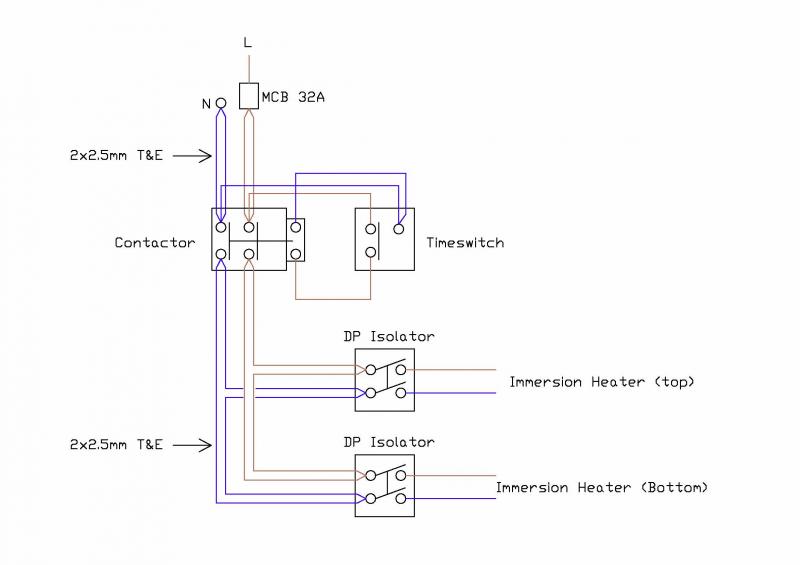This is the wiring diagram of the hot water system supplying our offices. The hot water cylinder has two immersion heaters both operated by the same timeswitch, but certain aspects of it seem a bit odd to me. Your comments / thoughts would be appreciated.
I would have expected the bottom element to be controlled via the timeswitch to come on during the 'off peak' rate and the top element wired to a permanent supply as a daytime top up as required, but they are connected together to operate from the same timeswitch. Is this normal?
Both elements are both fed from one 32A MCB wired in a 'ring' using two lots of 2.5mm T&E to the contactor connections. Seems a bit unusual to me, but I guess it makes it easier to get the wires into the terminals.
Then the immersion elements are connected in a second ring directly via DP isolators and not fused down. Presently we are just using the top immersion set to be on 24/7, so it's protected only by the 32A MCB
I would have expected the bottom element to be controlled via the timeswitch to come on during the 'off peak' rate and the top element wired to a permanent supply as a daytime top up as required, but they are connected together to operate from the same timeswitch. Is this normal?
Both elements are both fed from one 32A MCB wired in a 'ring' using two lots of 2.5mm T&E to the contactor connections. Seems a bit unusual to me, but I guess it makes it easier to get the wires into the terminals.
Then the immersion elements are connected in a second ring directly via DP isolators and not fused down. Presently we are just using the top immersion set to be on 24/7, so it's protected only by the 32A MCB


